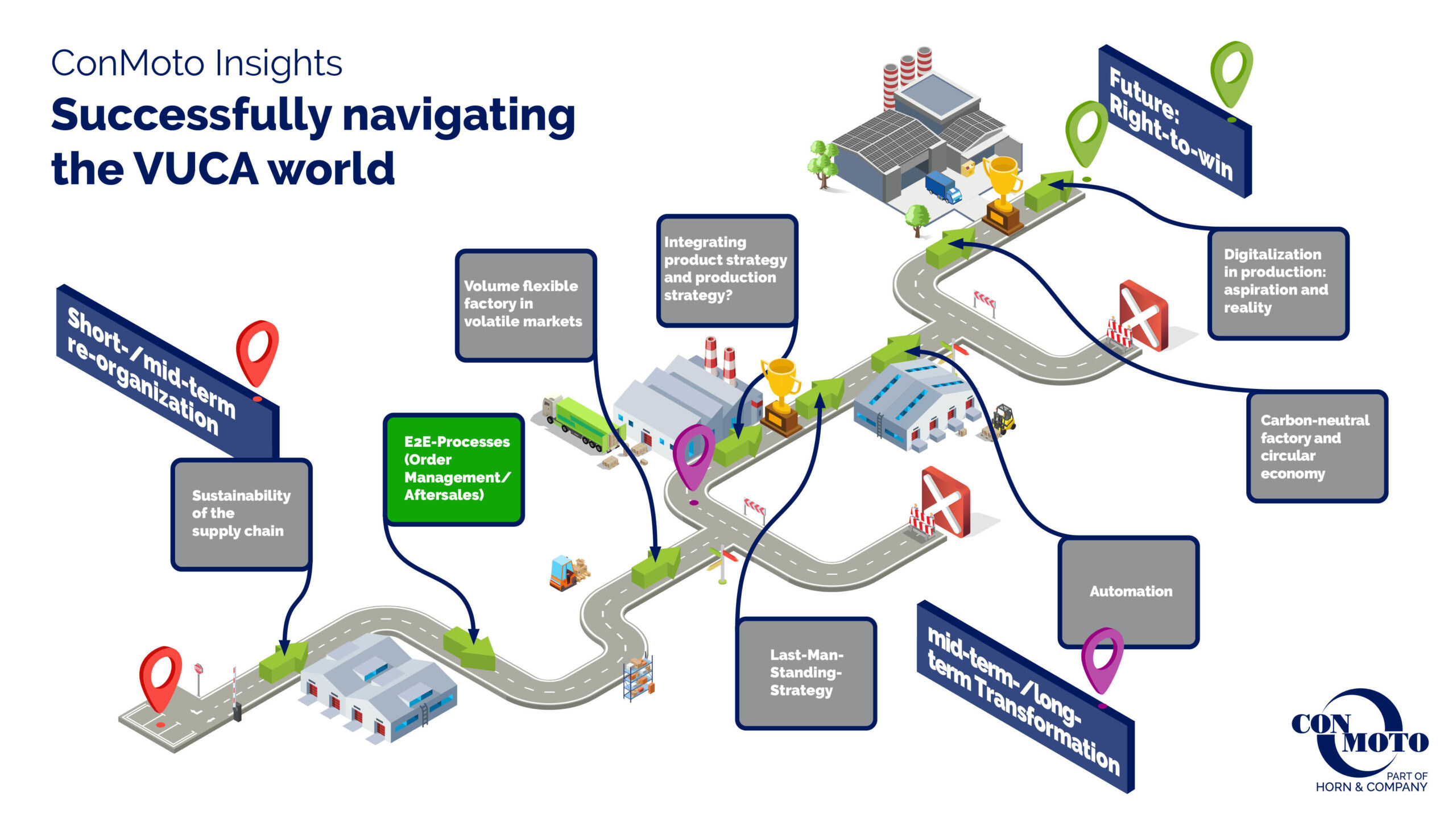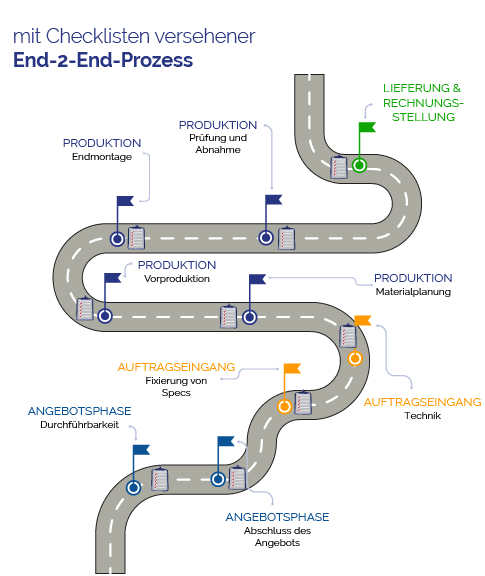
Scalability and resilience for business processes: End-to-end optimization in order processing

The demands on business processes are becoming increasingly complex. Companies have to contend with market disruptions, long lead times, supply chain disruptions and growing product portfolios, for example due to the parallel production of combustion engines and electric vehicles. Demanding customers, for whom not only product quality but also individual configurability and delivery capability play an important role in the purchasing decision, are putting additional pressure on the company. Under these VUCA conditions, the end-to-end (E2E) optimization of processes takes on a special significance: the E2E perspective looks at the entire sequence of a business process that is necessary to meet customer needs. Looking at the entire process reveals bottlenecks, process breaks and other inefficiencies in order to identify potential for improvement. In the second part of our series, we look at order execution and examine all process steps from the quotation phase to order receipt and production through to delivery and invoicing.
Results from previous projects:
- On Time Delivery increased by 8-15
- Lead time reduced by 15-30
- Personnel efficiency increased by >15

E2E optimization in practice
The E2E optimization of order processing offers significant potential: In typical projects, lead times have been reduced by 15 to 30 percent, on-time delivery improved by 8 to 15 percent, and personnel efficiency increased by over 15 percent. To unlock this potential, a standardized and pragmatic approach has been developed that can usually be implemented using in-house resources and without major investments, such as changes to IT systems.
At the beginning of the project, the boundaries (start/end point) of the end-to-end process must be clearly defined - using the order processing process as an example, these are typically quotation preparation and invoicing. In the next step, the overall process is divided into meaningful subsections (see illustration). Each subsection concludes with a “checkpoint”. Checklists are defined for these checkpoints, which clearly summarize the deliverables of the respective process sections. Detailed process descriptions in swimlane format transparently describe the processes and responsibilities for delivering the deliverables. In addition, an E2E performance management system is established that provides a standardized database and KPIs for all process participants. Deviations, bottlenecks and risks can be identified at an early stage and dealt with effectively.
Effective change management is set up in parallel with the content-related work. The results of the work are critically reviewed and confirmed in regular workshops with all stakeholders across all departments.
A successfully optimized end-to-end process can be managed according to the principle of the inverted pyramid for agile leadership: Employees are maximally empowered to manage the processes and any deviations that occur independently. Management supports employees, provides guidance and is available as an escalation body. In addition, the end-to-end approach ensures the necessary scalability, flexibility and agility along the entire process chain in order to be able to react to changes at short notice and across departments. The shared perspective means that everyone involved is pursuing a common goal: the fulfillment of the promise to the customer and customer satisfaction.

The success factors of E2E projects
Defined checkpoints with clear responsibilities and deliverables
- E2E performance management with a standardized database (single source of truth)
- Effective change management through regular workshops with all relevant stakeholders
E2E optimization: the opportunity for higher performance
Improve your company's performance now.
We will talk to you without obligation about the opportunities to leverage optimization potential.



